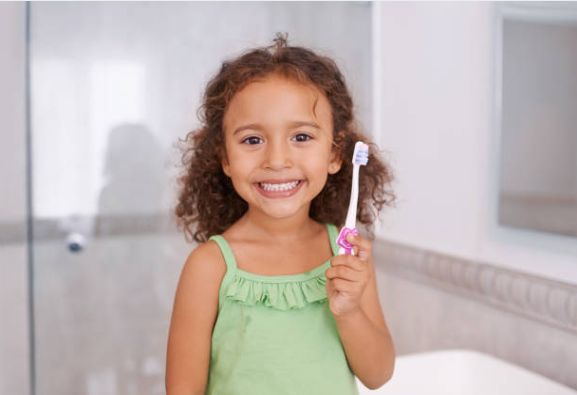About 40 percent of young kids use way too much toothpaste, according to The Centers for Disease Control and Prevention. And it can cause stripes and spots on their teeth. Kids under age three should only use a rice-sized amount, and kids under age six should only use a dollop the size of a pea.
For the latest study, researchers examined nationally elected survey data from parents with kids between the ages of 3 and 15 that were collected between 2013 and 2016. In all, data for 5,157 kids were included in the study.

The events showed that almost 40 percent of children within three and six years are using more toothpaste than dentists suggest. In fact, about 60 percent of kids between ages 3 and 15 used a half or full toothbrush load of toothpaste when they brushed. In the 3-to-6-year-old age group, 12 percent used a smear, 49.2 percent used the correct pea-sized amount, 20.6 percent used half a toothbrush load, and 17.8 percent used a full toothbrush load of toothpaste.
Toothpaste looks pretty safe, but using too much can cause problems.
Brushing your teeth with a result designed to make your mouth feel fresh is a delight. But from a realistic standpoint, that tasty paste is optional. You can remove food trash and plaque from your teeth without using toothpaste.
Dental plaque is a sticky, transparent biofilm of bacteria and sugars that is constantly in the process of forming on our teeth. Dental plaque is acidic and can break down tooth enamel and cause cavities to form. Plaque can also hurt your gums, causing gingivitis (red, swollen, bleeding gums), infections and eventually tooth loss.
Plaque is the main cause of cavities and gum disease. If you don’t consistently remove plaque from your teeth it can harden into an even sticker substance called tartar, which provides a perfect environment for bacteria colonies to grow under your gums and on your teeth.
One of the best ways to control plaque is brushing your teeth thoroughly at least twice a day. But you don’t need toothpaste to do this, just a soft toothbrush and good brushing techniques will remove plaque. Flossing, limiting sugary food and drinks, and regular checkups and professional cleanings should keep your teeth in top shape.
Regular preventive care, including professional cleanings, definitely reduces the chance of serious dental health issues. Dental insurance often pays 100% of the cost of dental checkups, knowing that the investment in preventive care will enable the insurance company and its customers to avoid costly restorative treatments over time.


